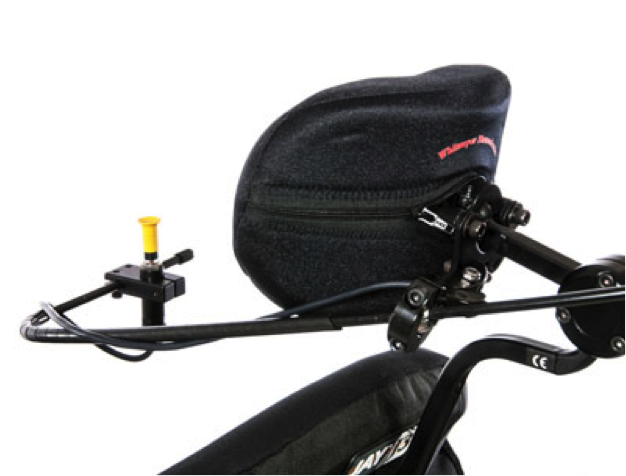Share:
This month, Clinical Corner has a guest blogger! Robert Norton, a Sunrise Medical colleague, provides his insights on selecting the ideal mini proportional joystick.
For a refresher on specialty controls, please refer to the 2013 Clinical Corner article, Specialty Controls for Power Wheelchairs.
It cannot be overstated how important regaining even the smallest amount of independence means to someone. A couple of years ago, I was reminded just how much of an impact the proper drive control and mounting system can have on an individual when I was introduced to a young man we will call "John." John was a 19 year old male diagnosed with cerebral palsy who had been sitting in his house for roughly 3 years in a manual tilt-in-space wheelchair. He reportedly had driven a power wheelchair successfully when he was younger, but due to changes in his posture he could no longer access a "standard" joystick or any of the other alternative input devices he had been exposed to.
The evaluation team and I determined very quickly that cognitively John was still capable of driving; however, his posture presented many obstacles. John's back was curved so severely that his head did not make contact with the headrest. Instead, his head was positioned at about a 45 degree angle to the seat, which placed it near the back post, and his visual orientation was sideways. In light of the fact that John did not have a great deal of head movement in this position, we decided his cheek was the best access point to provide him with the highest opportunity for success.
Due to John's limitations, we deduced that a mini proportional joystick would likely provide the most appropriate options. Mini proportional joysticks are a great alternative when the user presents with very limited movement and/or the joystick needs to be placed in a manner that a standard joystick simply cannot accommodate. The first two joysticks that came to my mind as potential options were the MicroPilot and MicroGuide from Switch-It. Even though these joysticks are similar in many ways, they each offer unique features.
The MicroPilot offers a zero throw option. This means that the joystick does not move when activated thus allowing for full proportional control even with very limited input. The MicroGuide is also a very small-bodied joystick, but it has a small range of throw. This has proven to be very helpful for an individual who requires a minimal activation area and benefits from the feedback that joystick movement provides. I have seen great success with both of these joysticks for clients who have limited movement and/or strength for joystick activation resulting from diagnoses such as ALS, incomplete quadriplegia, muscular dystrophy, and cerebral palsy.

Both the MicroPilot and the MicroGuide are offered with multiple "off the shelf" mounting options. They work very well for hand control when mounted in a small tray such as a Bullet Tray or simply by itself placed right at the front edge of the armrest. Either of the hand mounting options can be moved to a midline position if needed. Both of the controls are also excellent options to be placed as a chin control. I have found the MicroPilot to perform especially well for this use. Due to the zero throw, the user does not find himself straining his jaw to chase the joystick around as it stays in place. The chin placement can be accomplished either through a BDN (Hames) harness or off a headrest swing away boom. In addition to off the shelf mounting options, personally designing a mounting system that will meet the needs of clients is another option through manufacturers.
Using the MicroGuide with John's wheelchair, we were able to mount the drive control off of the back cane and place it next to John's cheek. With a slight head nod John was able to activate forward and reverse. Before long, he had figured out how to manipulate the joystick for left and right as well. The MicroGuide gave him the feedback he needed due to no visual contact with the joystick and the small size allowed it to be placed exactly where he needed it.
.png.aspx)
This client realized great success with a very unconventional mounting system and the MicroGuide. The MicroPilot and MicroGuide are two mini proportional joysticks that have improved the lives of many individuals. There are many other success stories where individuals have been given full proportional control and thus independence in accessing their environment.
Robert Norton
Robert Norton is a RESNA certified Assistive Technology Professional (ATP) with over 25 years of experience in the complex rehabilitation technology (CRT) industry. He joined the Sunrise Medical family in 2015 as a part of the Switch-It, Inc. acquisition and is currently the Director of Sales, Specialty Controls. Prior to working for an equipment manufacturer Robert worked as a CRT supplier. Robert's favorite part of his job is watching clients increase their independence via power mobility.